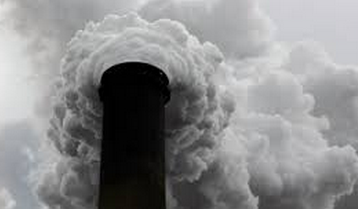World Bank: Curbing Air Pollution in India Needs Efforts Across South Asia
The World Bank released a report emphasising the importance of coordinated efforts of all South Asian countries to reduce air pollution.
What are the key findings of the report?
- There are six major airsheds in South Asia. These are:
- West/Central Indo-Gangetic Plain that included Punjab (Pakistan), Punjab (India), Haryana, part of Rajasthan, Chandigarh, Delhi, Uttar Pradesh.
- Central/Eastern Indo-Gangetic Plain: Bihar, West Bengal, Jharkhand, Bangladesh
- Middle India: Odisha/Chhattisgarh
- Middle India: Eastern Gujarat/Western Maharashtra
- Northern/Central Indus River Plain: Pakistan, and part of Afghanistan
- Southern Indus Plain and further west: South Pakistan, Western Afghanistan and extending into Eastern Iran.
- India has 6 large airsheds, some of which the country shares with Pakistan and Bangladesh. Between these airsheds, air pollutants move.
- While existing government policies can minimise particulate matter in the air, significant reduction can be achieved only if the territories spanning the airsheds implement coordinated policies.
- Using a modelling approach over South Asia as a whole, the report assesses several scenarios and costs involved in reducing the region’s average exposure to particulate matter.
- Currently, some 60 per cent of South Asians are exposed to an average 35 µg/m3 of PM2.5 each year.
- In some parts of the Indo-Gangetic Plain, it surged to as much as 100 µg/m3, which is nearly 20 times the upper limit of 5 µg/m3 recommended by the World Health Organisation (WHO).
- When the wind direction was predominantly northwest to the southeast, 30 percent of the air pollution in the Indian Punjab comes from the Punjab Province in Pakistan.
- Around 30 percent of the air pollution in Bangladesh’s largest cities like Dhaka, Chittagong, and Khulna comes from India.
- This shows that, if one country fully implements all air pollution control measures by 2030 even as other countries in South Asia continue to follow the current policies, it would not keep pollution exposure below 35 µg/m3.
- However, if other parts of South Asia also adopted all feasible countermeasures, air pollution can be brought down below that number.
- Countries are required to consider the interdependency in air quality within watersheds in South Asia when looking for alternative pathways for minimising air pollution.
- The report recommends full coordination between airsheds, which can bring down the average exposure of PM 2.5 in South Asia to 30 µg/m³ at a cost of $278 million (Rs.2,400 crore) per µg/mᶾ of reduced exposure. This could save more than 7.5 lakh lives each year.
Month: Current Affairs - December, 2022
Category: Environment Current Affairs • Reports & Indexes Current Affairs


